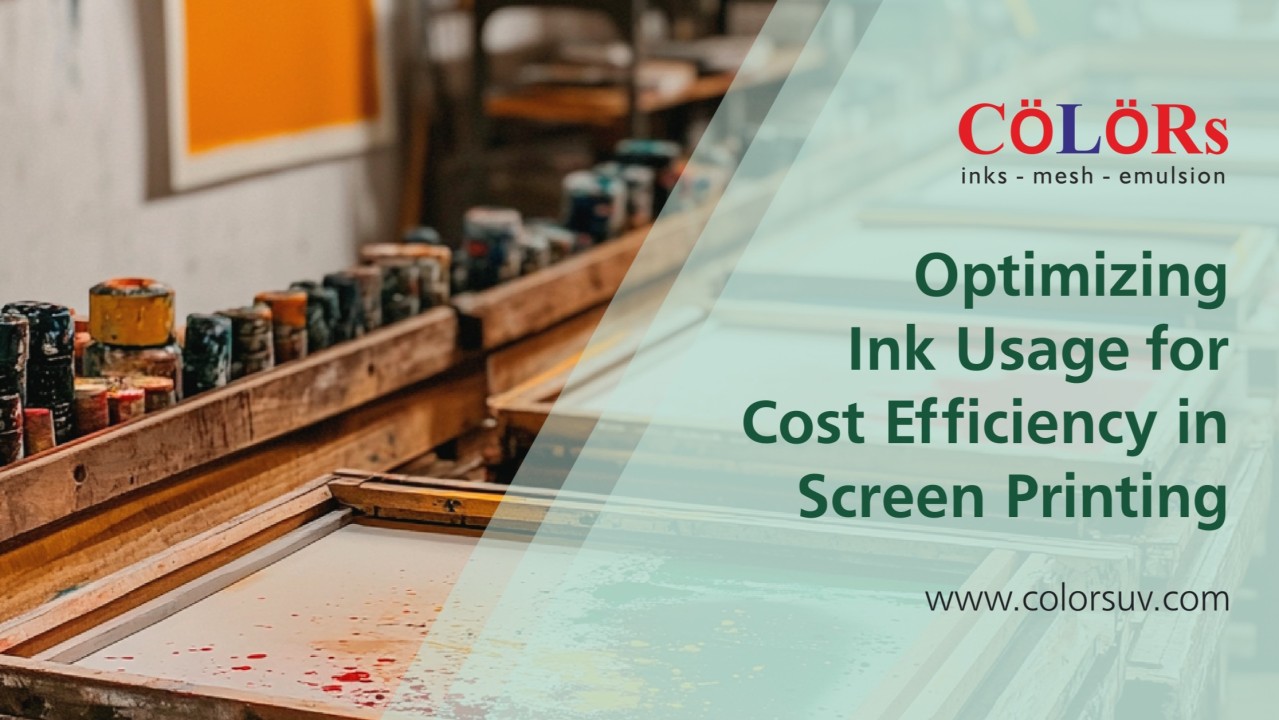Efficient ink usage in screen printing is crucial for reducing costs and maximizing profits. Here’s a concise guide to optimizing ink consumption across seven key factors:
1. Machine Type and Functions
Manual Presses: Printing press run by hand will lead to more ink wastage due to inconsistencies in printing techniques which may lead to increase consumption of ink.
Automatic Presses: In these machines speed, squeegee pressure, angle and other parameters can be adjusted to ensure uniform ink deposition during printing which will lower ink consumption. Also cylinder press will use less ink than cam-shell printing machine
Tip: Automation of printing process will lead consistency and minimize ink wastage and usage.
2. Flow and Viscosity of Ink
Proper Viscosity: Maintaining proper flow and viscosity is very important. Lower viscosity inks require less pressure that high viscose inks. This is more evident in manual screen printing. Printer may tend to print twice to get the same result which in turn will increase ink consumption.
Reducer and Retarder: These can modify the ink rheology and help in achieving better print quality.
Tip: While using solvent inks, it is advisable to use reducer or retarders to maintain the flow of ink, but this is not the case with UV inks.

3. Mesh Count and Mesh Opening
Higher Mesh Count: This means higher mesh threads per inch which in turn allows less ink to be transferred. This is ideal for fine details like lines and four colour printing.
Lower Mesh Count: This is suitable for bold designs as it contains fewer threads per inch and deposits more ink on the substrate. It may lead more usage of ink.
Tip: It is very essential to select the mesh with proper mesh count. Wrong mesh can lead to uneven prints and more usage of inks.
4. Screen Tension
Tension: Tension of screen reduces over period of time. It is recommended to maintain the tension as per job requirement. Lower tension will lead to more consumption of ink than higher ones.
Tip: Maintain proper tension in mesh for higher ink milage.
5. Squeegee Shore Hardness and Type
Squeegee Hardness: Choice of proper squeegee plays an important role in controlling ink deposition. Softer squeegee with shore hardness of 60-70 will deposit more ink on substrate than a Harder squeegees with shore hardness of 80-90.
Angle and Pressure: A squeegee with more than 45-degree angle and more pressure will deposit less ink.
Tip: Use harder squeegees and a steeper angle for finer, more efficient prints.
6. Substrates
Absorbent Materials: Coarse material like fabrics will absorb more ink. Hence ink with thixotropic properties will be beneficial in minimizing deposition.
Non-Absorbent Surfaces: Surfaces like plastic, metal, and glass do not absorb ink and use of higher viscosity ink with a high mesh count will deposit less ink.
Tip: Adjustment in ink thixotropy and mesh should be done as per substrate absorbency.
7. Screen Inks
Ink Type: Different types of inks for the same job will give different usage chart. This depends on type of drying / curing systems used. For example, UV inks will cure immediately after passing through UV lamp while solvent inks need at least 15 mins to dry. Therefore, consumption of UV ink will be less. Also, plastisol inks sit on top of the fabric, so they might use less ink compared to water-based inks that tend to soak into the material. Ink consumption will also depend on number of strokes required to get required print result.
Tip: Proper selection of ink is quite essential to control usage of ink
8. Recyclability of Used Inks
Ink Reuse: Unused ink from screens should be stored in separate containers after filtering. These can be used again, thus reducing waste.
Tip: Make a SOP for recycling ink to reduce costs.
Conclusion:
By optimizing machine settings, controlling ink viscosity, selecting appropriate mesh counts, adjusting squeegee techniques, and recycling unused inks, you can significantly reduce ink consumption, lower costs, and improve sustainability in your screen-printing operation.
Article by Dr. Mustafa Kapadia


